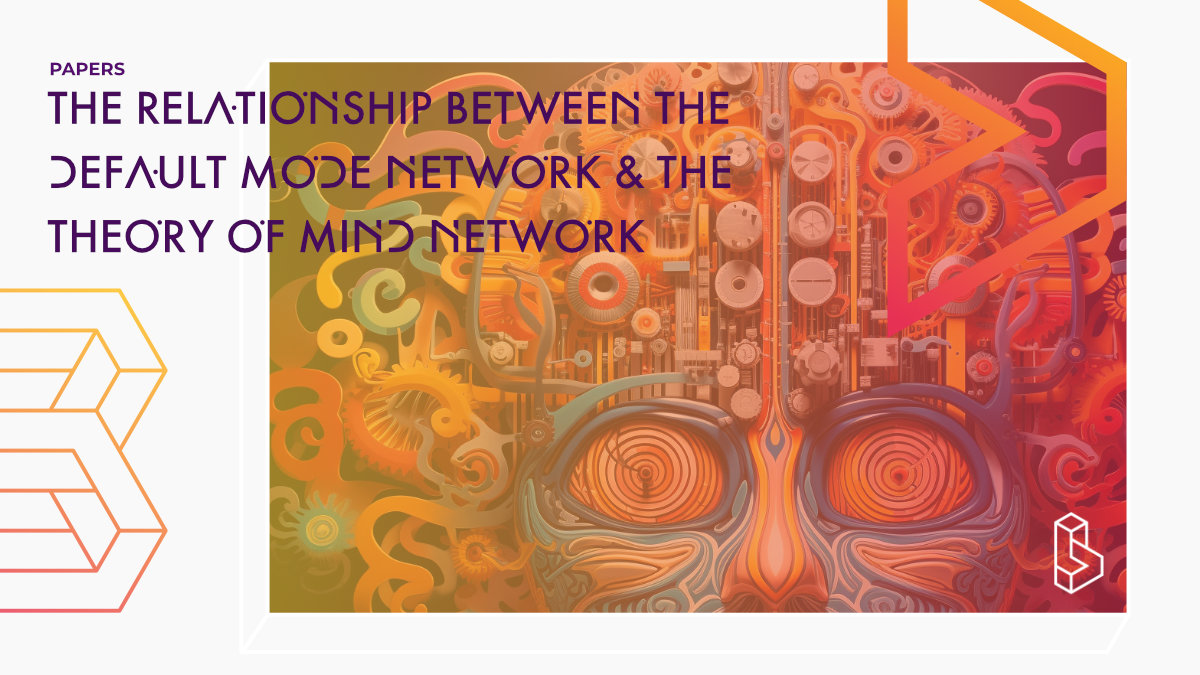This meta-analysis (s=88, n=2122) investigates the overlap between the Default Mode Network (DMN) and the Theory of Mind (ToM) networks, and their modulation by psychedelics. It reveals that the cingulate cortex plays a crucial role in the overlap between these networks, and psychedelics affect their neural relationship, potentially explaining their impact on self-perception and social cognition.
Abstract of The Relationship Between the Default Mode Network and the Theory of Mind Network
“The Default Mode Network (DMN) and the Theory of Mind (ToM) networks play a crucial role in our understanding of the neurocognition of the self. The DMN is commonly associated with introspection, while the ToM is involved in perspective-taking. There is no research investigating the overlap between the DMN and ToM in relation to causal effects such as induced by psychedelics, and their precise relationship remains therefore unknown. Psychedelics alter self-perception and modulate these networks, providing a unique opportunity to shed light on this relationship. We performed a quantitative meta-analysis of 88 studies with a total of 2122 participants to investigate the overlap between DMN and ToM and whether psychedelics affect their neural relationship. We found that the cingulate cortex (BA23 and BA31) plays a crucial role in the overlap between these networks which is substantiated by the effects of psychedelics. These compounds affect the neural basis of ToM and social cognition, which may underlie their therapeutic potential and deepen our understanding of the neural correlates of the self.”
Authors: Carla Soares, Gerardo Gonzalo, João Castelhano & Miguel Castelo-Branco
Summary of The Relationship Between the Default Mode Network and the Theory of Mind Network
Psychedelics alter self-perception and modulate the Default Mode Network (DMN) and Theory of Mind (ToM) networks, providing a unique opportunity to shed light on the relationship between these networks. The cingulate cortex plays a crucial role in the overlap between these networks.
As social species, humans heavily rely on social interactions, leading to the characterization of our species as “ultra-social animals”. Social cognition includes socio-cognitive abilities such as face processing, facial expression processing, joint attention, theory of mind, empathy, and moral processing.
Find this paper
https://doi.org/10.1016/j.neubiorev.2023.105325
Open Access | Google Scholar | Backup | 🕊
Cite this paper (APA)
Soares, C., Gonzalo, G., Castelhano, J., & Castelo-Branco, M. (2023). The Relationship Between the Default Mode Network and the Theory of Mind Network as Revealed by Psychedelics– A Meta-Analysis. Neuroscience & Biobehavioral Reviews. Advance online publication. https://doi.org/10.1016/j.neubiorev.2023.105325
Study details
Participants
2122
Humans

